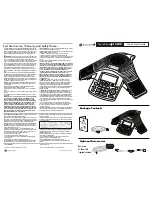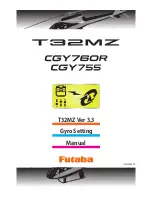
Ascotel® IntelliGate® 150/300 as of I7.9
Operation and Maintenance
175
sy
d-
021
0/1.
7
– I7.
9 – 1
2.
2009
Relocating a terminal
The terminal configuration data of a system terminal can be copied to another ter-
minal with the same level of added features using the AIMS Configuration Manager
(
Edit
→
Copy
and
Edit
→
Paste
). You can choose the parameters to copy from a list.
The data can also be saved with AIMS and then reloaded if the system terminal is
logged on to a different card.
Terminals with a different level of added features
Given that every level of added features on system terminals has a certain number
of features, the features are adapted (reduced or increased) to the new terminal
whenever the terminal definition is changed. The features are reduced if a terminal
is replaced by a terminal with a lower level of added features (e. g. Office 45
→
Office 10 to Office 35) or by a predecessor model (e. g. Office 45
→
Office 40).
If a system terminal is replaced by a system terminal of a different level of added
features, the terminal display will display the message "
Wrong terminal type
". On the
Office 10 the LED flashes slowly. In this situation, although the terminal can be used
for basic telephone operations, none of the added features will be available.
Before the added features of the new system terminal can be used, the new termi-
nal type will have to be entered in the PBX using the AIMS Configuration Manager
"
Terminal data
" or by configuring at the terminal.
6. 3. 6. 2
DECT terminals
Replacing a radio unit
1.
Dismantle the defective radio unit.
2.
Fit the new radio unit.
Replacing a handset
1.
Bisheriger DECT-Benutzer via AIMS abmelden.
2.
Log new handset on. The handset data is preserved until the user number is also
deleted.
















































